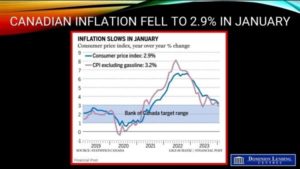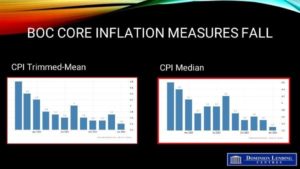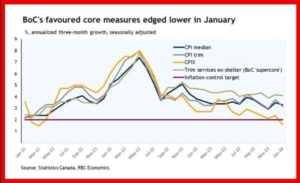The British Columbia government today unveiled additional details of its proposed house flipping tax that was first introduced in last week’s budget.
The government said it plans to introduce the legislation in the spring. If passed, the new tax will take effect starting January 1, 2025.
The legislation would impose a tax on any home sold within two years from its purchase date, but includes exemptions for people facing “unavoidable life changes,” including death, divorce and job relocation or loss.
According to government figures, 7% of homes bought between 2020 and 2022 were resold within two years.
Homes sold within the first year that don’t fall under any of the exemptions would face a tax of 20% on the profits, with that rate falling progressively to zero over the second year.
“We know that people are struggling to find homes to rent or buy in areas that are close to work and their families,” Minister of Finance Katrine Conroy said in a statement. “That’s why Budget 2024 takes further steps to deliver more housing for people faster and make sure homes are lived in.”
The proposed new tax accompanies other measures introduced in last week’s budget, including:
- Expansion of the First Time Homebuyers’ Program: First-time buyers of homes valued up to $835,000 will benefit from a property transfer tax exemption on the first $500,000 of their purchase price, with potential savings reaching $8,000. The government said this new exemption will benefit approximately 14,500 people, or about twice as many under previous exemptions.
- Newly built home exemption: To encourage the purchase of new constructions, buyers of homes valued up to $1.1 million will benefit from the newly-built home exemption. This is an increase from the current $750,000 limit.
- Rental home construction exemption: To lower the cost and encourage the construction of more rental units, eligible purpose-built rental buildings of four or more units will also receive a property transfer tax exemption that will run from January 1, 2025, until 2030.
Desjardins no longer offering mortgages for homes in certain flood zones
Desjardins Group has made changes to its underwriting guidelines and will no longer offer mortgages for properties that fall within certain flood zones.
According to media reports, parts of Île-Bizard and Île-Mercier in Quebec, which saw severe flooding in 2017 and 2019, will be impacted by the credit union’s decision.
“The impacts of climate change, including water damage, are growing in importance and causing substantial damage,” Desjardins said in a statement.
Buyers of properties where the seller already has a Desjardins mortgage will still be able to obtain financing for up to 65% of the loan if proper flood-protection measures are in place, according to media reports.
Quebec homebuying intentions remain strong despite economic challenges: survey
Homebuying intentions remain high in Quebec despite high interest rates and a challenging economy, according to the results of a new survey by Léger for the Société d’habitation du Québec (SHQ) and the Québec Professional Association of Real Estate Brokers (QPAREB).
The survey found that 22% of Quebecers are planning to purchase a property within the next five years, up slightly from the previous year. For younger households between the ages of 18 and 34, 49% say they expect to purchase in the next five years, up from 47% in 2022 a year earlier.
The expected average purchase price is $440,000, up 34% since 2020. “Households are therefore very aware of rising property prices in Quebec, but are nevertheless resigned to dealing with these prices and are hoping for a drop in interest rates before they consider taking action,” Charles Brant, QPAREB’s Market Analysis Director, said in a release.
However, the sharp rise in interest rates has made it more challenging to remain a homeowner, the survey found, with just 72% of Quebecers feeling they could meet their financial obligations in 2023, down from 86% in 2021.
Single-family homes are the preferred property choice, representing 81% of buying intentions. Intentions to purchase condos remain stable at 14%, despite a rise in purchase prices and a sharp 20% increase in condo fees over the past two years.
The survey of 4,162 people found that only 14% of homeowners are looking to sell in the next five years, pointing to a continued tightening of the already limited supply of housing.
This supply-demand imbalance has also trickled into the rental market, pushing average rent prices to $963 in 2023 from $862 in 2021, according to the survey.
Mortgage arrears held steady in November
Canada’s national arrears rate held steady in November, according to data from the Canadian Bankers Association.
The arrears rate, which tracks mortgages that are behind payments by three months or more, was unchanged at 0.17%. That works out to just over 8,560 mortgages in arrears out of a total of over 5.05 million.
This is well below the highs seen during the pandemic, when the arrears rate reached a peak of 0.27% in June 2020. The rate is highest in Saskatchewan (0.57%) and Alberta (0.33%), and lowest in British Columbia (0.13%) and Ontario (0.11%).
Real estate professionals saw revenues plunge in 2022: StatCan
Revenue from real estate agents and brokers fell by over 20% in 2022 in the wake of higher borrowing costs brought on by the Bank of Canada’s rate hikes, which took the key overnight target rate from 0.25% in January to 4.25% in December.
Recent figures from Statistics Canada show operating revenues from real estate agents and brokers fell to $20.9 billion in 2022, down 22.8% from $26.7 billion in 2021.
The declines in revenue were seen in almost all provinces, led by British Columbia and Ontario, which saws declines of 25.9% and 27.3%, respectively. Alberta was the only province to see revenues rise, which were up 5% from 2021 to 2022.
“Operating revenue in the real estate agents and brokers industry is expected to continue to decline in 2023, as most real estate associations reported continuing weakness in both residential home resale transactions and home prices across Canada,” the StatCan report noted. “The industry also faced affordability challenges because the cost of borrowing continued to increase in 2023.”
This article was written for Canadian Mortgage Trends by:




